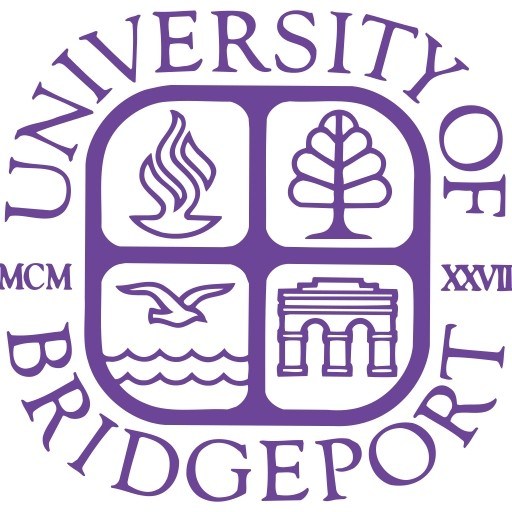Photos of university / #nyuniversity
The Master of Science in Risk Management at New York University offers a comprehensive and rigorous curriculum designed to equip students with the essential knowledge and skills needed to identify, assess, and mitigate risks across a wide range of industries and sectors. This program combines theoretical foundations with practical applications, preparing graduates to address complex risk challenges in dynamic global environments. Students will explore core topics such as enterprise risk management, financial risk, insurance principles, and regulatory frameworks, while also gaining specialized expertise in areas like cybersecurity risk, operational risk, and strategic risk management. The program emphasizes data-driven decision-making, fostering analytical skills and proficiency with quantitative tools critical for effective risk assessment. Through a combination of rigorous coursework, case studies, and experiential learning projects, students will develop a strategic mindset and the ability to design comprehensive risk management programs aligned with organizational goals. The NYU Risk Management program also provides opportunities for internships and industry collaborations, enabling students to gain practical experience and establish professional networks within the financial, corporate, and consulting sectors. Graduates will be prepared for diverse career paths including risk analyst, risk manager, compliance officer, insurance underwriter, and consulting specialist. The program is suitable for recent graduates seeking to enter the risk management field as well as professionals looking to advance their careers through specialized knowledge and advanced skills. With access to NYU’s extensive resources, alumni network, and faculty expertise, students will be well-positioned to lead risk management initiatives and contribute to resilient, responsible organizations in an increasingly uncertain global landscape.
Module I: NYU Stern - New York
Strategic Risk Framework
Students will learn a holistic view of integrated risk management that is globally relevant. To acquire this perspective, students will learn about modern risk metrics and its evident limitations; acquire an appreciation for the importance of low-probability high-impact events and correlation spikes; discuss practical alternatives to create effective, efficient, and robust risk-transfer structures; and analyze issues related to the implementation of risk management systems and compliance with key regulatory requirements in risk-sensitive industries. By the end of the course, you will be able to place all these issues in a conceptual framework that forms the backbone of the program as a whole. The course then moves on to cover sovereign risk and issues in country risk assessment. Topics include macroeconomic drivers of exchange rate volatilities, sources of macroeconomic internal and external disequilibrium, sovereign risk calibration, and building sovereign risk dimensions into exposure portfolios.
Risk, Corporate Finance, and Valuation
Here, students will build the analytical framework to value a business and begin to learn concepts of optimal capital structure, risk and return, leverage, and cost of capital. In addition, students will understand how financial decisions affect value and acquire the analytical tools necessary for sound financial decision making.
Concepts in Risk Management: Statistical Models
Here, students will be introduced to statistical concepts and models that are of use in Quantitative Risk Management. We will start with basic ideas from probability theory such as probability distributions, expected values, higher moments, skewness, and kurtosis and then cover more advanced topics such as nonlinear models, non-normal distributions, tail index estimation, etc.
Course Index
- 1 Module I
- 2 Module II
- 3 Module III
- 4 Module IV
- 5 Module V
Module II: Amsterdam
Concepts in Risk Management; Parts I and II
Here, students will learn the theoretical concepts behind risk analytics and their practical use in the fund management industry. After a review of the theoretical and statistical concepts underlying portfolio management, the course focus will shift to risk analytics, tracking error ex-ante and ex-post, as well as tracking error decomposition and its usefulness in active portfolio management.
Students will also examine the main classes of derivatives securities---futures, forwards, options, and swaps---focusing on their uses and valuation. We make liberal use of case studies (Aracruz, Metallgesellschaft, Barings, SocGen, Harvard, and others) to understand and highlight the potential risks in these instruments. We also examine the valuation and hedging of derivative securities at both a formal level, and equally importantly, an intuitive one (How do these models work? What do they capture? What do they omit? How could they go wrong?).
Market Risk
This course will provide the analytical and practical tools necessary to manage market risks. The course starts with the regulatory requirements of Basel II with respect to market risk, then continue with analyzing basic tools to measure market risk including Value at Risk (VaR), RAROC (Risk-Adjusted Return on Capital), sensitivity tests, scenario analysis, stress testing, and back-testing of the models.
Students will also become familiar with the strategic issues of hedging policy, through discussions that include the hedging impact of non-tradable risks and linkages between different types of risk.
Module III: NYU Stern - New York
Crypto Currencies and Cyber Risk
This course will introduce participants to Bitcoin, electronic currencies, and emerging mobile payment systems. Based on new applications of information technology, these virtual currencies attempt to remove money and banking from the control of sovereign governments, and they represent one of the most disruptive innovations ever in consumer finance. The underlying distributed ledger technology has many other potential applications in diverse areas such as property registration, accounting and auditing, gambling and financial derivatives.
Behavioral Theory in Risk Management
Effective risk management requires a mix of qualitative skills involving psychology and risk culture alongside quantitative skills involving probability and statistics. Issues pertaining to psychology and risk culture were root causes of adverse events such as the global financial crisis, the BP oil spills in the Gulf of Mexico and Alaska, the threat posed by global warming, the JPMorgan London Whale event, and the failure of the commodities brokerage firm MF Global. This course provides participants with a structural framework for how to analyze the manner in which cognitive, emotional, and social factors impact the management of both financial risk and operational risk. The integration of quantitative and qualitative approaches is a central theme of the course. Students will acquire a series of skills for identifying and managing specific psychological phenomena that underlie the practice and culture of risk management.
Operational Risk
Here, the objective is to discuss Operational Risk in a more applied manner. The goal is that students will be able to get acquainted with concepts and ideas that are useful in their dealings with Operational Risk on a day-to-day basis in their groups or in their departments.
Credit Risk
Here, students will be introduced to and focus more closely on issues in credit risk, concepts behind its modeling, and analysis of credit-related instruments such as default-prone debt of credit derivatives. Students will acquire an understanding of how and why these products played such a critical role in the ongoing crisis. We will also lead students through the new financial sector reforms and discuss their direct or indirect impact on credit derivatives, and credit markets in general, going forward.
The course will include analysis of the Basel II Model, the implications of the standardized and internal-ratings-based (IRB) approaches and issues relating to their implementation. New models and approaches will be analyzed including KMV, Creditmetrics, and so-called reduced-forms credit risk measurement models.
Financial Crises: Causes, Consequences and Remedies
This course helps students understand what caused the recent mortgage and sovereign debt crises in the Western economies; why regulation failed given its static nature and misplaced focus on individual firms rather than the system as a whole; and, what financial sector reforms are being undertaken to address these causes of crises and regulatory flaws. Will these new reforms succeed? Or do they continue to leave "shadow banking" in shadows? And will new forms of shadow banking emerge as regulatory arbitrage, perpetuating a new cycle of financial innovations and crises?
Risk and Structured Transactions
This course provides students with an improved understanding of developments in securitization and structured credit risk transfer, with special emphasis on the recent credit market disruptions and the changes in regulation under consideration.
In addition to covering risk transfer through asset-backed securities and collateralized debt obligations, the course explains risk transfer using credit derivatives and synthetic asset securitization. Given its prominence among structured products today, special emphasis is placed on mortgage-backed securities. The new techniques open up fresh possibilities for the transfer, pricing and management of credit risk.
Liquidity Risk
Liquidity is the ability of a firm to meet its cash obligations from a combination of existing cash reserves, asset sales, and new borrowing. Liquidity risk management, then, is the art of balancing the existential danger of being caught without enough liquidity against the costs of maintaining liquidity.
While liquidity risk management has always been essential for financial firms, the spectacular and fatal losses of liquidity during the financial crisis of ‘07-’09 have greatly increased the focus of managers, regulators, and even the general public on this important branch of risk management.
This unit begins by explaining the challenges of liquidity risk management, i.e., how various financial firms face uncertainties with respect to the stability of funding sources and the liquidity of assets, which can be mitigated to varying degress at varying costs. Several cases will then illustrate the practice, and sometimes failure, of liquidity risk management in specific settings. The unit will conclude with a survey of techniques used to measure, model, and manage liquidity risk, including those recently mandated by national and international regulators.
Module IV: Abu Dhabi
Risk Management in a Global Corporate Setting
In this session, the goal is to understand the international dimension of risk and develop a framework to quantify it. We will consider how firms should hedge risk from a broad strategic perspective and zoom in on currency risk and, in particular, transaction, translation, and economic exposure. We will study when it makes sense to hedge financially and what types of contracts to consider. We then will go into detail on the link between currency risk and international financing, comparing domestic issues versus international issues, and hedged structures versus non-hedged alternatives. The different ways of hedging the currency exposure embedded in the bonds will be discussed.
Regulatory and Reputational Risk, Enterprise Risk, and Corporate Governance
The mission here is to investigate the risks associated with strategic and tactical developments in financial and non-financial firms and their linkages to the reputational capital of the firm as it is embedded in share prices. Students will also examine the role of corporations, investors, intermediaries, and regulators in the events that preceded and followed the build-up and bursting of the financial bubble and consider key dimensions of corporate governance. The concepts will be illustrated through recent and classic case studies of situations of corporate scandals.
Corporate Distress, Bankruptcy and Restructuring
This course explores current conditions and outlook for Global Corporate and Sovereign Debt Markets and strategies for investing in distressed firms and their securities. The well known Z-Score family of models will be analyzed for investment and restructuring strategies as well as updated statistics on rating equivalents and default/recovery rates.
Closing: NYU Stern - New York
Strategic Risk Capstone
The Strategic Risk Capstone requires students to build on their own professional experience and exposure to the academic content of the program to create a meaningful project that demonstrates their ability to take an integrated view of risk management. This could take a number of forms:
- The global financial implications of a specific risk management technique, instrument, or market
- The impact of risk management on the competitive positioning and strategic execution of firms (or a particular firm) in global financial markets and particular market segments
- An in-house project to examine a key risk management issue of interest to that firm
- An assessment of probable future directions in the development of specific instruments, techniques, or markets associated with risk management
Previous Capstone Projects:
Does Risk Management Matter to Shareholders?
The authors of this paper pose a question that is central to any student devoting a year to studying risk management: Does it matter to shareholders? The authors develop a creative research design that allows them to test whether firms with more sophisticated risk management techniques have different characteristics (e.g. Tobin's Q, financial leverage, and stock return volatility) compared to firms with an unsophisticated approach to risk management. Their empirical analysis confirms that there are statistically significant differences between firms with sophisticated versus unsophisticated risk management practices as it pertains to Tobin's Q, financial leverage, and stock market volatility. Measured by these indicators, the authors conclude that risk management matters for certain operational parameters of the firm (leverage) and the resultant financial market outcomes (Tobin's Q and leverage).
A Framework for Operational Risk Mitigation
This paper attempts to develop a new framework, dubbed CRAM for Corporate Risk Adaptation Model, to identify firms with the likelihood of avoiding a catastrophic operational risk event, or surviving one if the event were to occur. CRAM relies on 4 categories of data (People, Process, Governance, and External) and 12 key factors that populate the categories. The authors draw on 5 case studies (WorldCom, MT Global, Toyota, Enron, and Marsh & McLennan) to make an initial calibration of the model, but then include several other firms (Apple, Google, Starbucks, Mastercard) as a way to check whether the model classifies these successful companies as “good.”
Systemic Risk Safeguards for Central Clearing Counterparties
The authors of this project have tackled a large and complex issue that stands in the foreground of the Dodd-Frank policy agenda. Dodd-Frank mandates a much larger role for central counterparties (CCPs) to handle the clearing and settlement of derivative transactions that historically were largely traded and cleared on a bilateral basis. Putting many eggs in a single basket clearly elevates the need to watch the basket. The authors of this project dissect various sources of capital that underlay a generic CCP, and then run a series of simulations subjecting the CCP to stress conditions in order to assess how many layers of the risk waterfall are impacted under different stress scenarios.
Corporate Risk Management Experiences During the 2008 Crisis
The project addressed how various firms, most of which were in the food sector and therefore heavily exposed to commodity price changes, responded to the financial turbulence of the 2008 crisis. The authors developed a common template of data, narrative, tables and charts to include for each of the seven companies in the sample. The sample included companies headquartered in the USA and Latin American, some primarily privately owned and others publicly held, and so offered a reasonable cross section of firms, some of which managed their way through the multitude of risks in the crisis and others of which succumbed by having to take on substantial new debt or bankruptcy.
Requirements
- A bachelor’s degree and strong grade point average (GPA).
- A minimum of five years of full-time, professional work experience.
- Demonstrated interest or experience in the field of risk management.
- Experience with quantitative analysis.
- One Essay
- Curriculum Vitae/Resume
- Two Recommendations (may also be submitted online)
- Official Transcripts
- Copy of passport
- Applicants with less than 10 years professional experience may be asked for a GMAT score after initial application review by the Admissions Committee.
- TOEFL Result (if required)
- Non-Refundable Application fee of $103
- Final Interview. Should the Admissions Committee feel positive about your candidacy upon review of a completed application, we will contact you to schedule a final interview. This can be conducted via phone, Skype, or face-to-face.
The financing studies for the Risk Management program at New York University encompass a comprehensive array of funding options designed to support students throughout their academic journey. Tuition fees for the program vary depending on the specific course load and residency status, with NYU offering competitive rates aligned with other top-tier institutions in the region. Students are encouraged to explore various financial aid opportunities, including scholarships, grants, and fellowships tailored specifically to graduate students in risk management and related fields. The university's Office of Financial Aid provides detailed guidance on eligibility criteria, application procedures, and deadlines for federal and institutional aid programs, ensuring that prospective students can effectively plan their finances.
Additionally, NYU participates in federal loan programs, such as Direct Unsubsidized Loans, which allow students to borrow funds at favorable interest rates, with repayment options structured to accommodate diverse financial situations. Private loan options are also available through approved lenders, offering further flexibility for students seeking additional support. Many students in the risk management program secure funding through assistantships, research positions, or part-time employment facilitated by NYU, which not only provides income but also valuable professional experience.
The university emphasizes financial literacy and responsible borrowing, providing workshops and counseling services to help students make informed decisions. International students are advised to explore specific visa-related financial requirements and potential funding sources available to them. Overall, NYU's extensive network of financial resources aims to make the risk management program accessible to qualified candidates from diverse backgrounds, supporting their academic success and professional development in the field of risk analysis, insurance, and financial planning.
The New York University offers a comprehensive program in Risk Management designed to equip students with the analytical skills and practical knowledge necessary to identify, assess, and mitigate various risks faced by organizations across diverse industries. The curriculum focuses on the fundamental principles of risk management, including understanding risk sources, quantitative and qualitative risk assessment methods, and the development of effective risk mitigation strategies. Students are introduced to key areas such as financial risk, operational risk, strategic risk, and legal and regulatory compliance. The program emphasizes the importance of integrating risk management practices into overall organizational governance and decision-making processes.
NYU's Risk Management program combines rigorous coursework with opportunities for experiential learning through case studies, internships, and projects with industry partners. This approach allows students to apply theoretical concepts to real-world scenarios, fostering practical problem-solving skills and a deep understanding of the complexities involved in managing risks in today's dynamic global environment. The faculty comprises seasoned professionals and academic experts with extensive industry experience, ensuring that students receive mentorship and insights grounded in current best practices.
Graduates of the program are well-prepared for careers in insurance companies, financial institutions, consulting firms, corporate risk departments, and regulatory agencies. They acquire competencies in risk modeling, data analysis, insurance strategy, and crisis management, enabling them to contribute effectively to their organizations’ stability and growth. Additionally, the program emphasizes the development of communication and leadership skills, recognizing their importance in advocating for proactive risk management and fostering organizational resilience.
Moreover, NYU's location in New York City provides a vibrant environment for networking and career development. Students have access to numerous industry events, seminars, and conferences, which facilitate connections with professionals and potential employers. The program is also aligned with the evolving needs of the marketplace, ensuring that graduates are equipped with up-to-date knowledge of emerging risks such as cyber threats, climate change impacts, and technological disruptions. Overall, the NYU Risk Management program aims to produce versatile professionals capable of navigating complex risk landscapes and contributing to the strategic success of various organizations.









